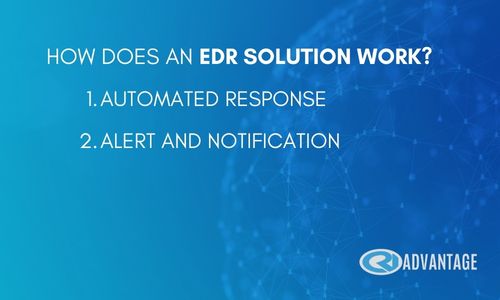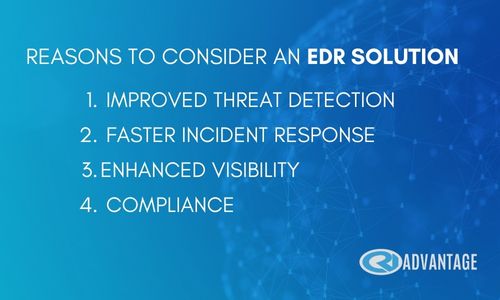Find out what Endpoint Detection and Response is and how it can help you secure your digital environment with this comprehensive guide.
What is Endpoint Detection and Response?
Endpoint Detection and Response (EDR) is an advanced security technology used to detect, prevent, and respond to cyber threats targeting your digital assets. With EDR, organizations can identify malicious activity as it’s occurring and take action by blocking access or shutting down a system if necessary. It allows systems administrators to identify potential attacks before significant damage is done quickly.
Benefits of Implementing an EDR Solution
By implementing an EDR solution, organizations can take advantage of several benefits. These include improved visibility into potential threats and increased security against malicious activity. Additionally, it allows for more effective monitoring, faster response times to suspicious activity, greater control over user activities which helps reduce the risk of data breaches, and better compliance with industry regulations that require certain levels of security.
EDR solutions typically include a combination of tools and technologies, such as endpoint agents, network sensors, and analytics engines, that work together to detect and respond to suspicious activity in real time.
How Does an EDR Solution Work?

When an EDR solution detects a potential threat, it typically triggers a response in one of two ways:
- Automated Response: The EDR solution automatically takes action to contain and neutralize the threat, such as quarantining an infected endpoint or blocking a suspicious network connection.
- Alert and Notification: The EDR solution alerts security personnel of the potential threat and provides details about the incident, such as the affected endpoint(s), the type of threat, and the severity of the attack. Security personnel can then investigate the incident and take appropriate action to mitigate threats.
Reasons to Consider an EDR Solution

- Improved Threat Detection: EDR solutions can detect threats that other security measures may miss, such as malware, zero-day exploits, and advanced persistent threats.
- Faster Incident Response: EDR solutions can provide real-time alerts and help security teams quickly investigate and respond to potential security incidents.
- Enhanced Visibility: EDR solutions can provide detailed information about endpoint activity, including process execution, network connections, and user behavior, which can help organizations better understand their overall security posture.
- Compliance: EDR solutions can help organizations meet regulatory compliance requirements by providing detailed endpoint activity logs and reports.
Overall, Endpoint Detection and Response is an important component of modern cybersecurity strategies, helping organizations stay ahead of evolving threats and protect their valuable data and assets.
For over 20 years, we have provided governmental and private organizations with cybersecurity experts to help guide their processes, identify weaknesses, and protect them from cybersecurity threats. We’ve helped companies get in-depth insights into their infrastructure through our Endpoint Detection Response offering. Book a complimentary consultation with our cyber expert to help you evaluate your company’s ability to detect and respond.

